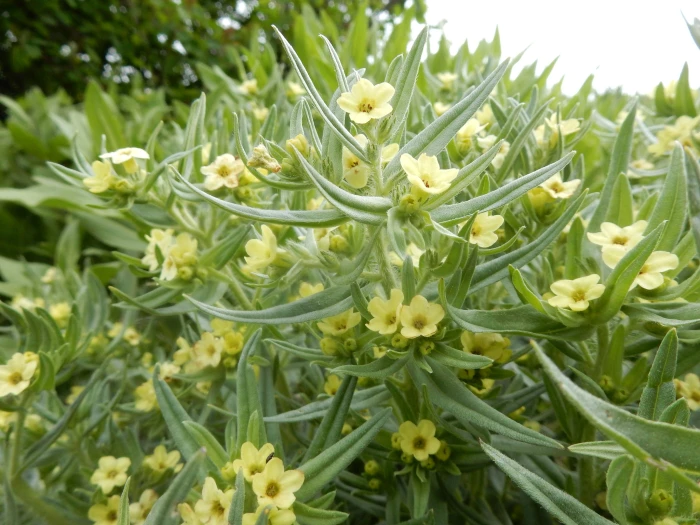Western Stoneseed
(Lithospermum ruderale)
Western Stoneseed (Lithospermum ruderale)
/
/

Matt Lavin
CC BY 4.0
Image By:
Matt Lavin
Recorded By:
Copyright:
CC BY 4.0
Copyright Notice:
Photo by: Matt Lavin | License Type: CC BY 4.0 | License URL: http://creativecommons.org/licenses/by/4.0/ | Rights Holder: Matt Lavin | Publisher: iNaturalist | Date Created: 2016-05-26T10:58:04-07:00 |





















Estimated Native Range
Climate Requirements for Converse, Texas
| This Plant | Your Site | Plant Suitability for Your Location | ||
|---|---|---|---|---|
| • Precipitation | 7" - 86" | 32" | Your precipitation may be too high for this plant. | Too high |
| • High Temp. | 62°F - 94°F | 95°F | Your summers may be too hot for this plant. | Too hot |
| • Low Temp. | -2°F - 34°F | 39°F | OK, but your winter temperatures are warmer than normal for this plant | OK |
This plant may not grow well at your location - your precipitation is too high.
Summary
Lithospermum ruderale, commonly known as Western Stoneseed or Lemonweed, is a perennial herb native to the open woodlands, grasslands, and sagebrush deserts of western Canada and the western United States. It typically grows from a taproot and woody caudex, producing leafy stems that reach 8 to 20 inches in height. The lance-shaped leaves are arranged alternately along the stem, and the plant bears light yellow flowers in the late spring to early summer. The flowers are not particularly showy but are interesting upon close inspection. Western Stoneseed is adapted to a wide range of soil types, provided they are well-drained, and it can tolerate both full sun and partial shade.
Western Stoneseed is valued for its historical medicinal uses rather than for ornamental purposes. It is drought-tolerant, making it suitable for xeriscaping and naturalized areas where low maintenance is desired. In cultivation, it requires minimal water once established and thrives in poor soils, making it an easy plant to grow in challenging conditions. There are no popular garden cultivars of this species, and it is not commonly found in nurseries. Potential problems include overwatering, which can lead to root rot. While it has a history of medicinal use by Native American groups, it is not widely used in modern herbal medicine.CC BY-SA 4.0
Western Stoneseed is valued for its historical medicinal uses rather than for ornamental purposes. It is drought-tolerant, making it suitable for xeriscaping and naturalized areas where low maintenance is desired. In cultivation, it requires minimal water once established and thrives in poor soils, making it an easy plant to grow in challenging conditions. There are no popular garden cultivars of this species, and it is not commonly found in nurseries. Potential problems include overwatering, which can lead to root rot. While it has a history of medicinal use by Native American groups, it is not widely used in modern herbal medicine.CC BY-SA 4.0
Plant Description
- Plant Type: Herb
- Height: 1-3 feet
- Width: 0.5-1.5 feet
- Growth Rate: Slow, Moderate
- Flower Color: White, Yellow
- Flowering Season: Spring, Summer
- Leaf Retention: Deciduous
Growth Requirements
- Sun: Full Sun, Part Shade
- Water: Low
- Drainage: Fast
Common Uses
Butterfly Garden, Drought Tolerant, Low Maintenance
Natural Habitat
Native to open woodlands, grasslands, and sagebrush deserts
Other Names
Common Names: Western Stoneseed, Yellow Puccoon, Wayside Gromwell, Western Gromwell, White Stoneseed, Whiteweed, Western Puccoon, Columbia Gromwell
Scientific Names: Lithospermum ruderale, Batschia pilosa, Batschia torreyi, Lithospermum lanceolatum, Lithospermum pilosum, Lithospermum ruderale, Lithospermum ruderale var. lanceolatum, Lithospermum ruderale var. macrospermum, Lithospermum ruderale var. torreyi
GBIF Accepted Name: Lithospermum ruderale